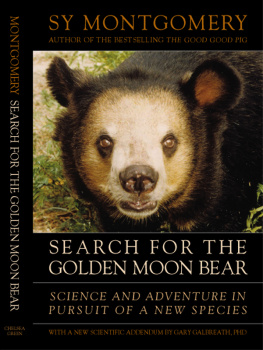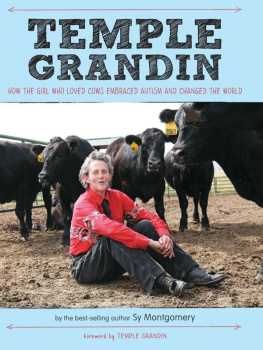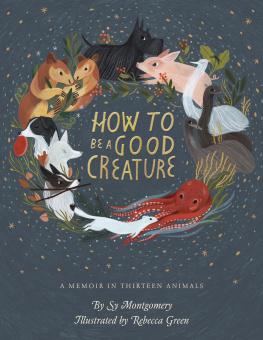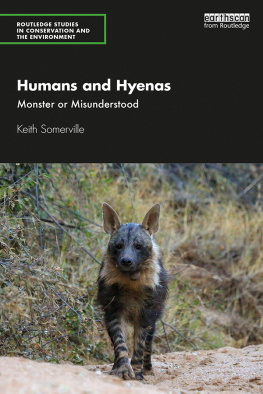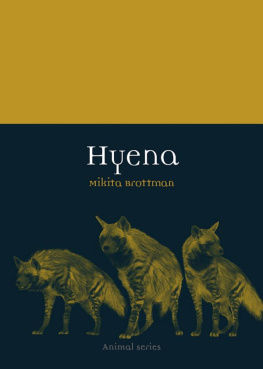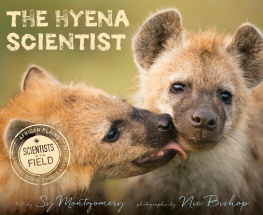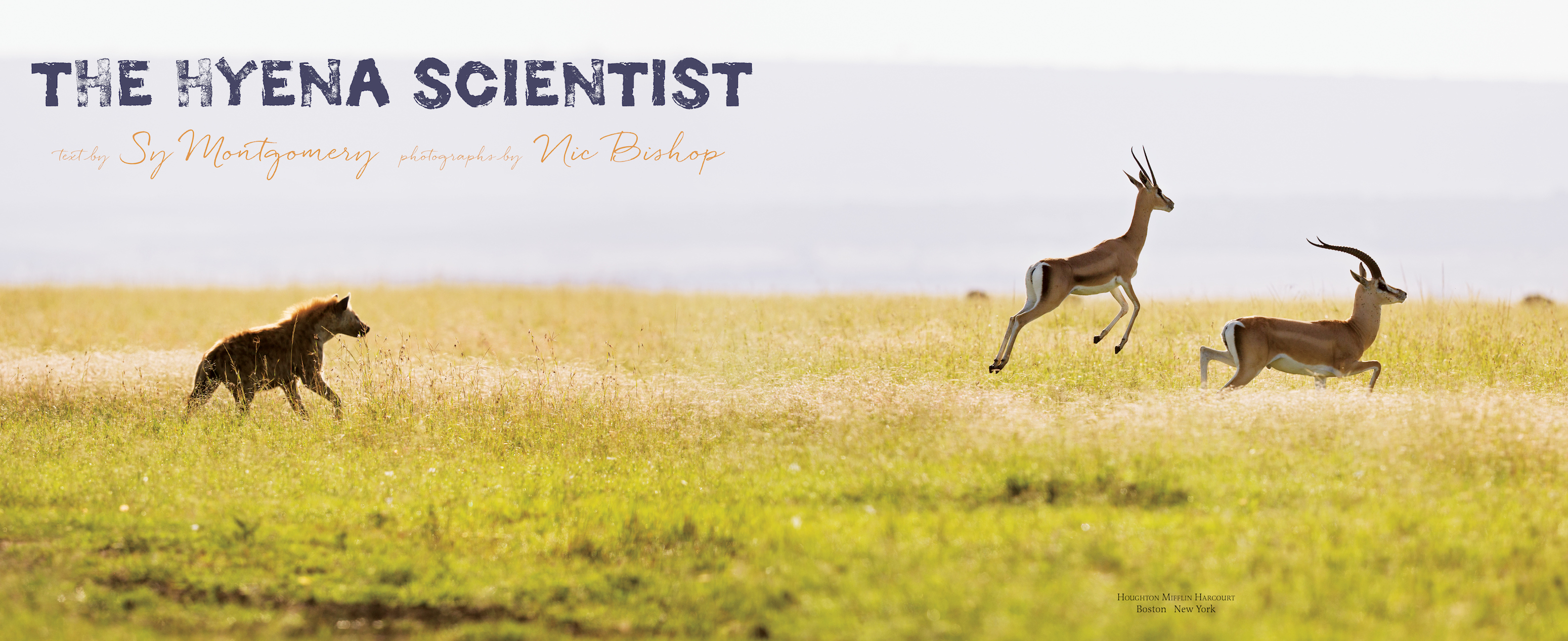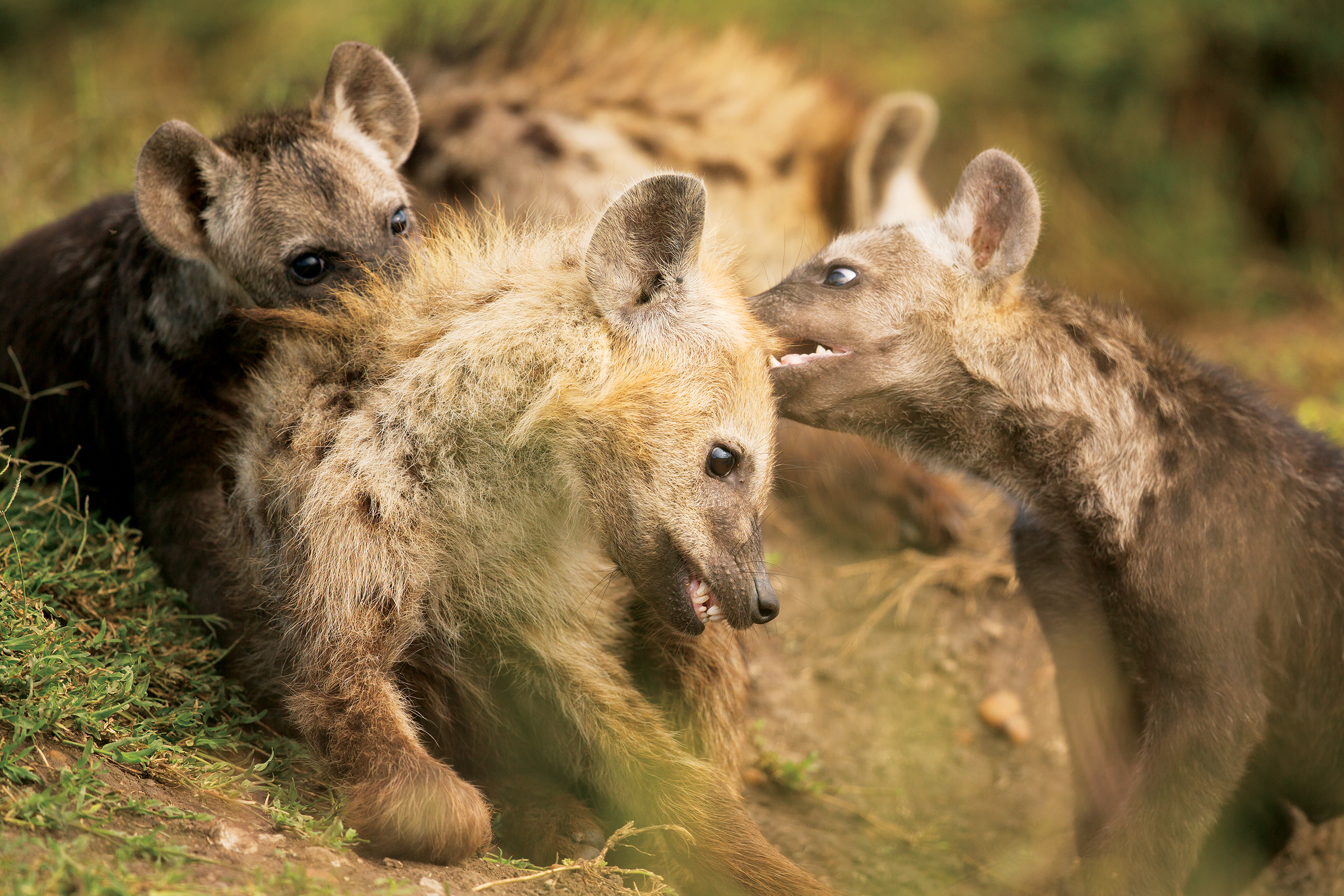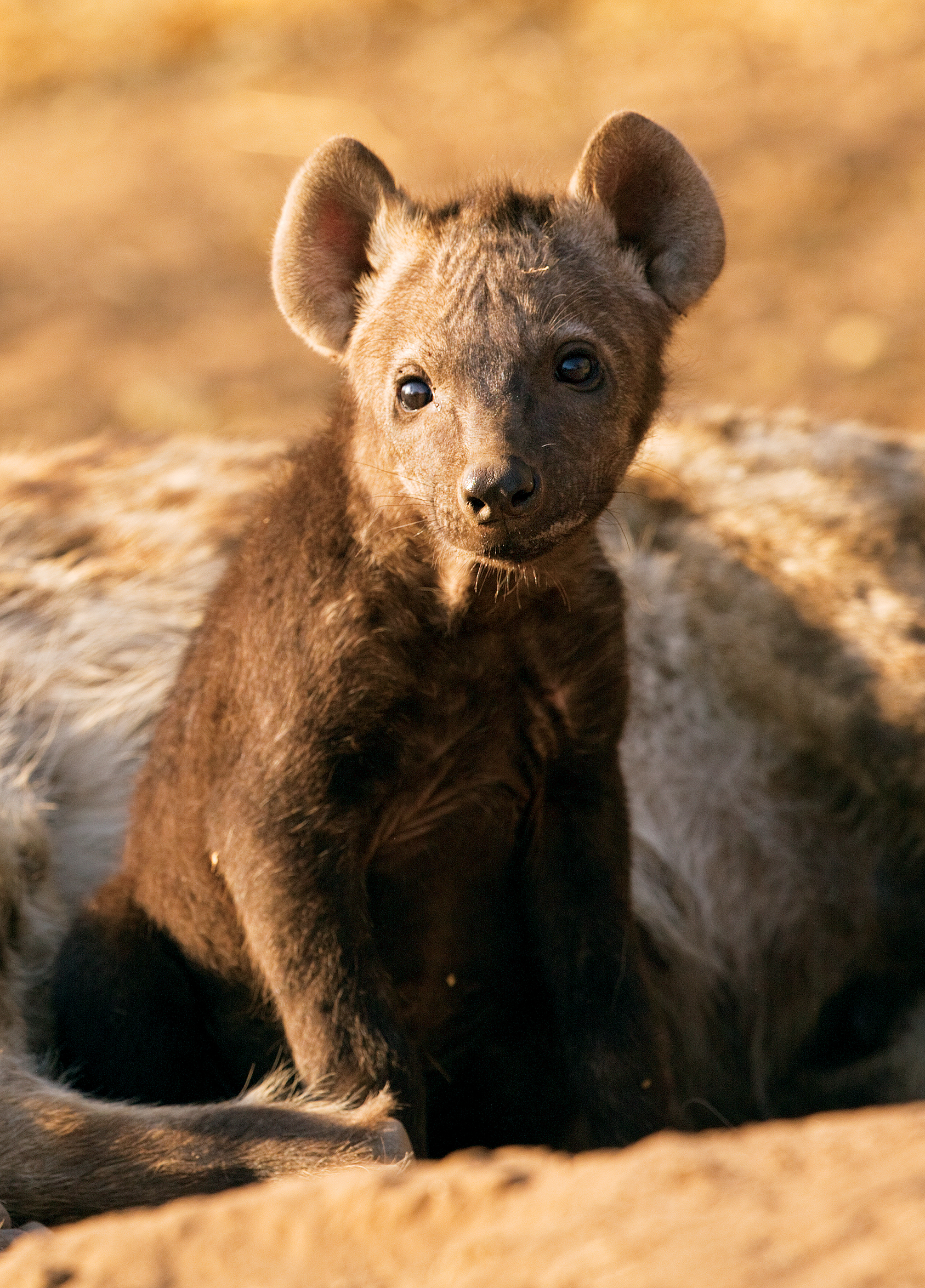Map on by Susanna Chapman.
All rights reserved. For information about permission to reproduce selections from this book, write to or to Permissions, Houghton Mifflin Harcourt Publishing Company, 3 Park Avenue, 19th Floor, New York, New York 10016.
Library of Congress Cataloging-in-Publication Data is on file.
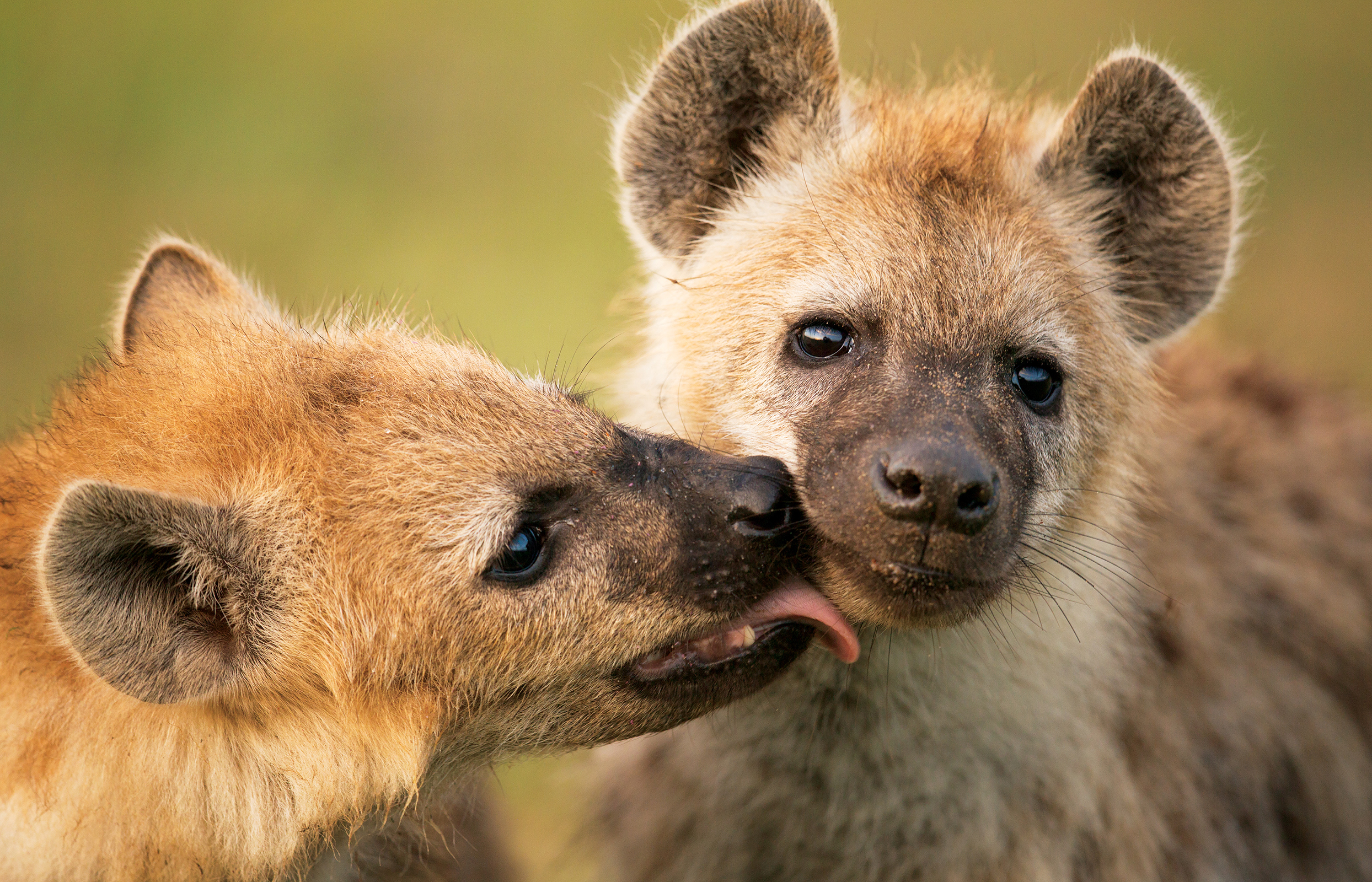
Hyena society is built on strong social bonds.
At the den, the fluffy, spotted babies play like puppies, dashing and lunging, wrestling and spinning. Tiny infants, still coal black and lacking their spots, sit on opposite sides of a patient, older cubeach chewing gently on an ear of their tolerant sibling. Nearby, an even younger infant nurses contentedly from his mother, whos sacked out on her side. She lifts her head, tilting her tall, expressive ears forward, and looks through the windshield of our Land Cruiser into our faces. There is no malice in her wide, brown eyes, just innocent interest. Reassured its only us, the mother lays her head back down and relaxes with her baby.
With long, dark muzzles, blond coats with black spots, bristly black tails, and ears that look like a cross between a teddy bears and an elfs, these animals could easily be mistaken for some exotic breed of dog. But they are only distant relatives of mans best friendand far more distant in human affection. Their species is almost universally despised across human cultures. Feared for biting children, hated for digging up corpses, dismissed as cowardly scavengers, the loving, social, attractive animals playing and resting in front of us are widely considered to be dirty, ugly, and mean.
Theyre not the monsters people fear. Nor are they what they seem. Though they look like dogs, they separated from the ancestors that would lead to the dog lineage some fifty million years ago, back when Antarctica was still lined with tropical rainforests. They are actually more closely related to cats, and even more closely related to mongooses. But they dont really belong with the mongoose tribe, either: they belong to their own family, the Hyenidae, a group that includes only four species: the little-known aardwolfa small, striped termite-eaterand the striped hyena, the brown hyena, and the species before us, the spotted hyena.

The cubs in the den playfully tease each other.
Modern hyenas, like humans, are a recent evolutionary invention, perhaps less than one million years old. Our two lineages grew up together. In fact, at least one biologist has suggested that hyenas are the reason so few fossils of early humankind exist in Africa: hyenas, whose strong jaws can crush bones and whose tough guts can digest them, ate the skeletons of our ancestors. Bad PR goes back a long time in our relationship.
Hyenas inspire horror in people, wrote wildlife biologist Hans Kruuk. Hyenas are inexorably linked with garbage cans, corpses, feces, bad smells, and hideous cackles.
In Green Hills of Africa, Ernest Hemingway called the hyena a devourer of the dead, trailer of calving cows, ham-stringer, potential biter-off of your face at night while you slept, sad yowler, camp-follower, stinking, foul, with jaws that crack the bones the lion leaves, belly dragging, loping away on the brown plain...
A century before he penned those words, Samuel Griswold Goodrich noted in his Illustrated Natural History of the Animal Kingdom that, while archvillains like Aaron Burr and Judas Iscariot had their defenders, it seemed no one would say a kind word about hyenas. Even Disneys movie The Lion King managed to portray hyenas as conniving, cowardly thieves.
Just yards from our vehicle, the fuzzy cubs scamper around the den, bucking and twirling, as the golden light of an African afternoon haloes the plush fur on their ears. How can you not like hyenas when you see this? asks Kay Holekamp, sixty-four, a zoologist from Michigan State University. Theyre adorable! Kays behind the wheel of our Land Cruiser here in southwest Kenyas Masai Mara, one of the most spectacular wildlife reserves in Africa, and she knows each of these cubs by nameas well as their mothers, fathers, grandmothers, and in many cases, great-grandmothers.
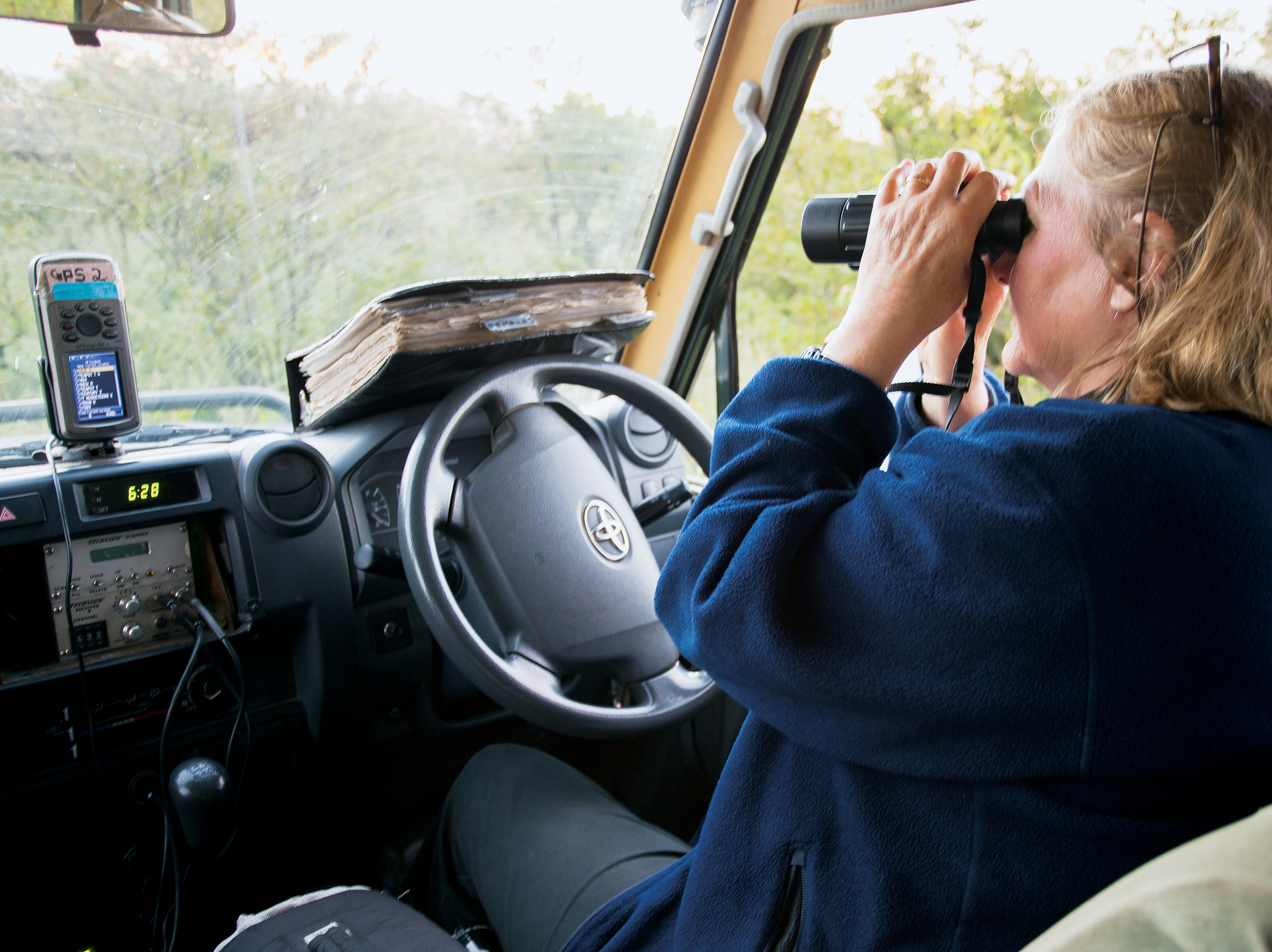
Kay observes from the safety of her vehicle.
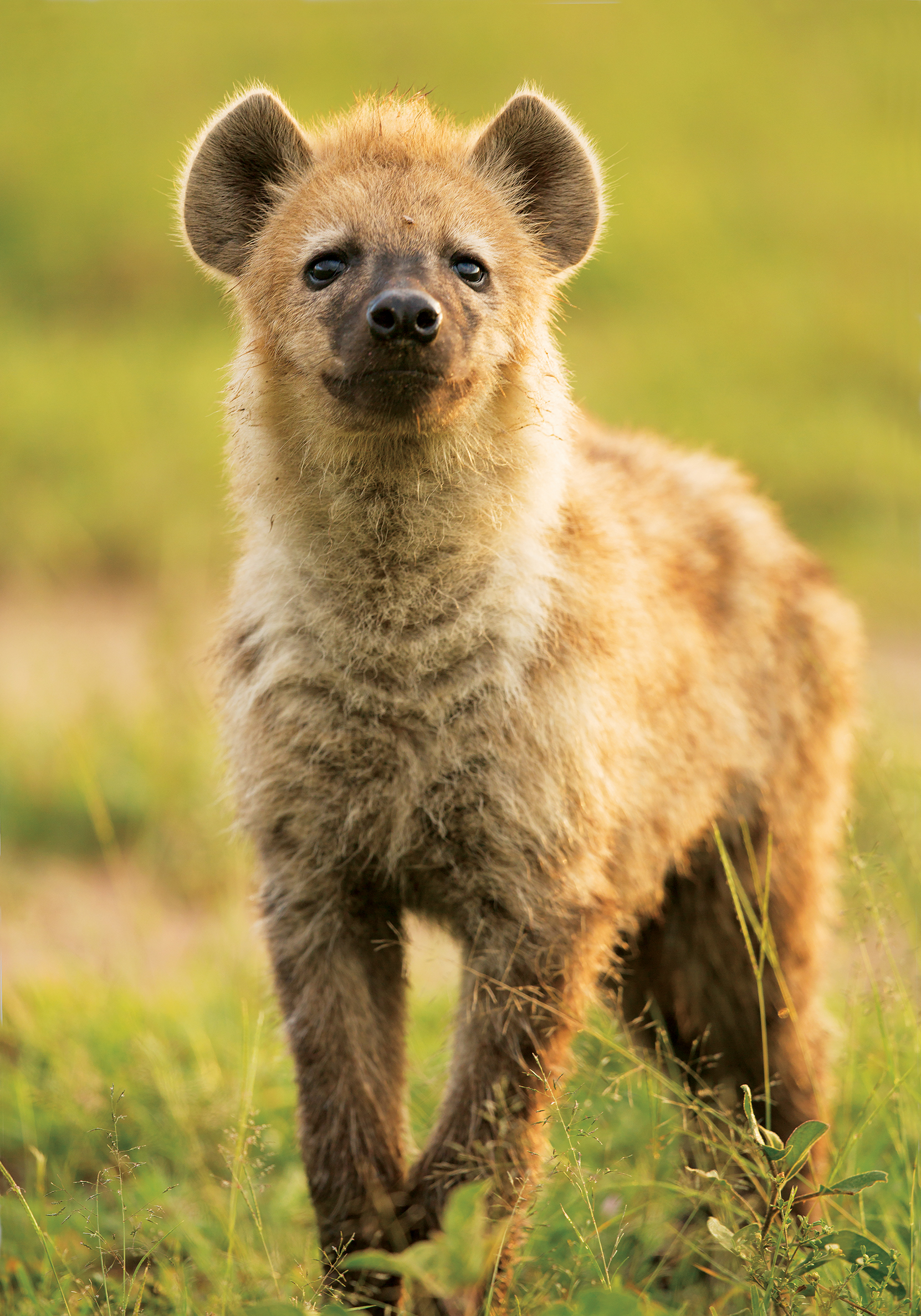
The spotted hyena is Africas second largest carnivore, after the lion.
Kays research on the spotted hyena is one of the longest continuously running field studies of any mammal in the world. Kay has been at it for three decadesand her findings are clearing up the animals bad rep, revealing the spotted hyena as an unexpectedly brave, smart, and extremely social species.
Instead of a skulking scavenger, the spotted hyena is a skilled and mighty hunter. Its the second biggest, and the most formidable, carnivore in Africayes, Kay tells us, even more formidable than the lion. Though all hyenas but aardwolves evolved from scavenging ancestors, and they will happily devour any food they can find, Kay has found that spotted hyenas (unlike the striped and brown) directly kill 60 to 95 percent of the food they eat. A single 130-pound female is capable of running down and killing, unaided, a bull wildebeest three times her own weightand can consume thirty pounds of meat (the equivalent of 120 quarter-pound hamburgers!) in half an hour.
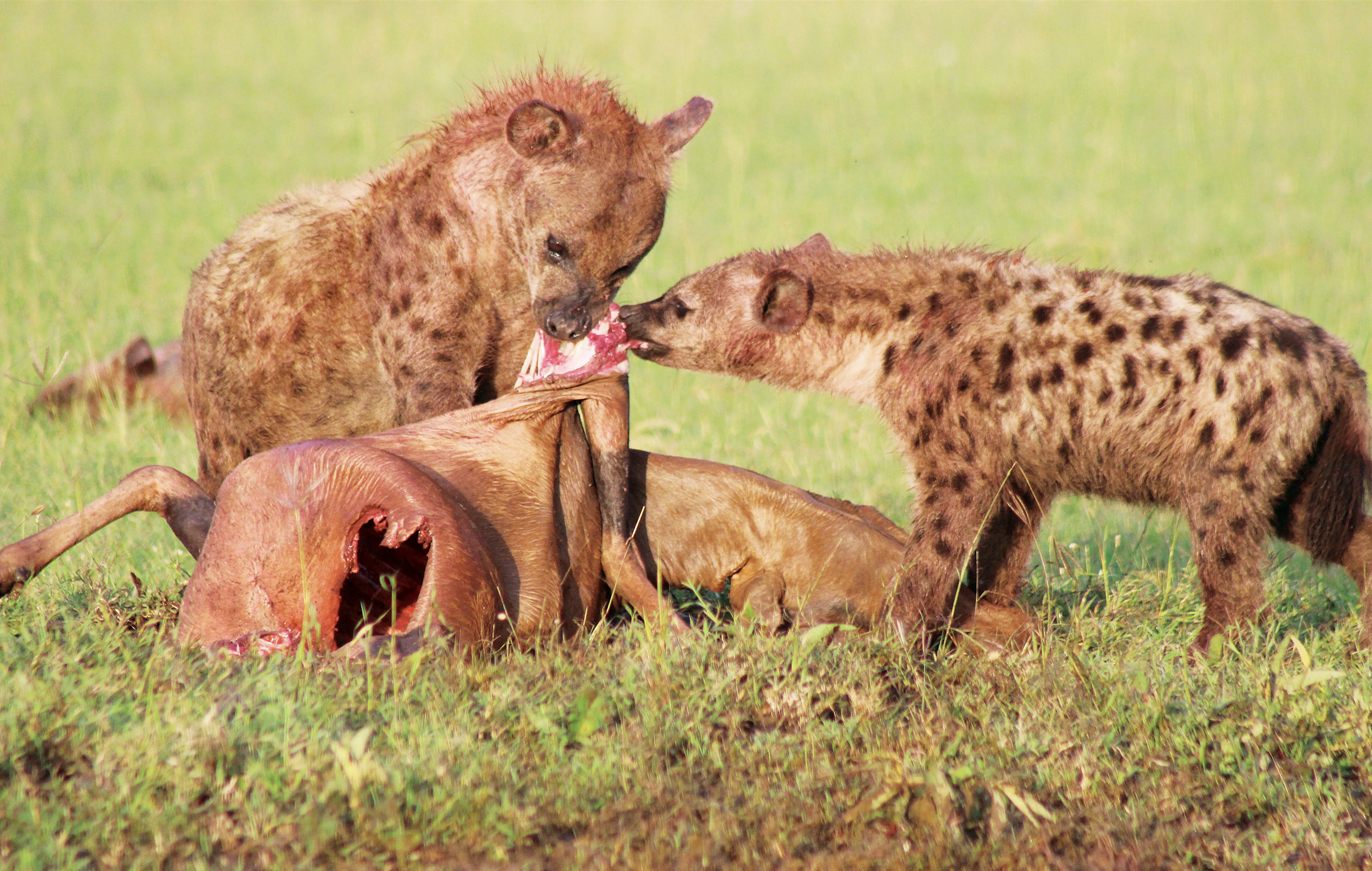
Hyenas are formidable carnivores. These have brought down a topi.
Spotted hyenas are keystone predators who control the health of the ecosystem. Take hyenas out of the picture and all kind of things would go out of control, says Kay. That once happened in South Africa, when farmers decimated hyenas and their fellow predators. The result? Ecological disaster: explosions of herbivores reduced grasslands to deserts. Soil erosion ruined roads and altered the course of rivers. Only when the predators returned did the ecosystem begin to recover.


